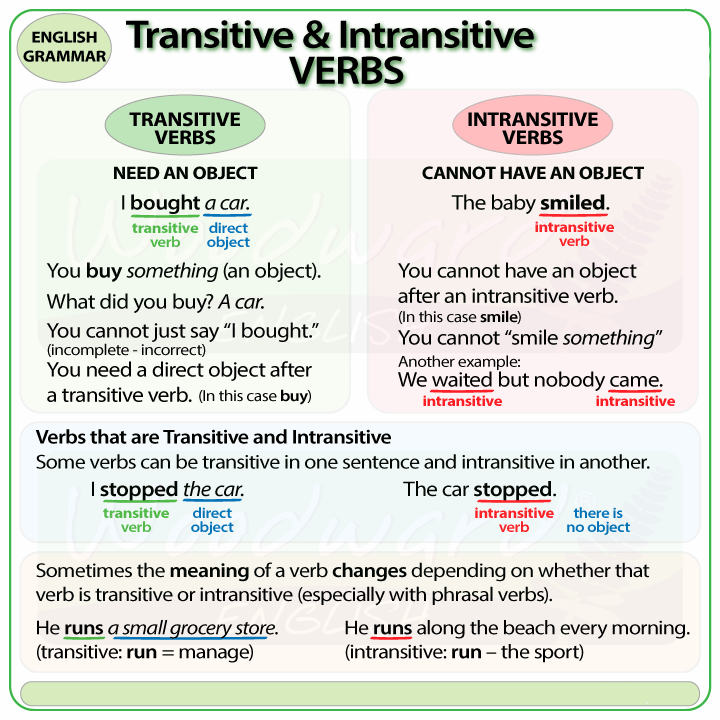What are transitive and intransitive verbs? While the concepts might sound difficult, they are easier to understand when you think about the verb and whether there is an object receiving the action of the verb.
Transitive verb
A transitive verb is a verb that requires an object to receive the action.
Example:
Correct: The speaker discussed different marketing strategies in the video.
Incorrect: The speaker discussed in the video.
The verb discuss requires an object (different marketing strategies). It is necessary to state what the speaker discussed.
Direct and Indirect Objects
A transitive verb can take more than one object.
Donovan gave his sister a laptop.
In this sentence, there is an indirect object, his sister, and a direct object, a laptop. However, there is another way to say this same idea using a prepositional phrase.
Donovan gave a laptop to his sister.
In English, an indirect object may come between a transitive verb and the direct object, like the first example sentence about Donovan, or the indirect object could be in the form of a prepositional phrase, like the second example sentence about Donovan.
An indirect object is only needed if the action is being done to or for somebody; when using a transitive verb, you need to include a direct object, but you may not need to include an indirect object.
Finding the Object
You can figure out the direct object by using this question format: “The subject did what?” or “The subject [verb] what?”
The instructor addressed what?
the student’s question
Miriam borrowed what?
the methodology book
Can you bring what?
your copy of the text book
The speaker discussed what?
different marketing strategies
The committee members will raise what?
money
You can find the indirect object by asking the question “To whom?” or “For whom?”
Donovan gave a laptop to whom?
his sister
Intransitive Verbs
An intransitive verb does not take an object. Using an object immediately after an intransitive verb will create an incorrect sentence. However, there may be other information after the verb, such as one or more prepositional phrases or an adverb.
Example
Correct: The students arrived at the residency in Houston.
Incorrect: The students arrived Houston.
An action verb with a direct object is transitive while an action verb with no direct object is intransitive. Some verbs, such as arrive, go, lie, sneeze, sit, and die, are always intransitive; it is impossible for a direct object to follow.
Other action verbs, however, can be transitive or intransitive, depending on what follows in the sentence. Compare these examples:
Because of blood sugar problems, Rosa always eats before leaving for school.
Eats = intransitive verb.
If there is no leftover pizza, Rosa usually eats whole-grain cereal.
Eats = transitive verb; cereal = direct object.
During cross-country practice, Damien runs over hills, through fields, across the river, and along the highway.
Runs = intransitive verb.
In the spring, Damien will run his first marathon.
Will run = transitive verb; marathon = direct object.


